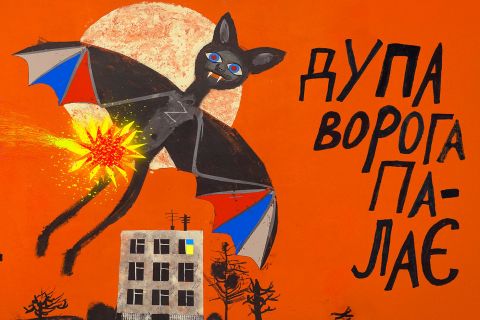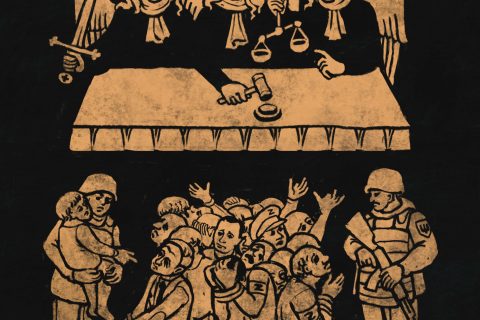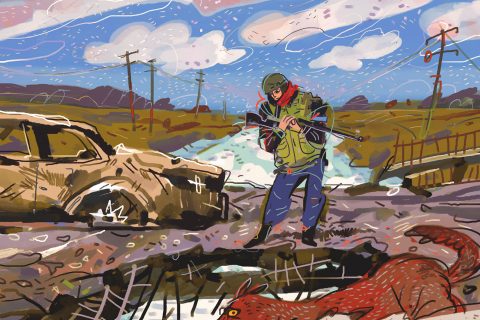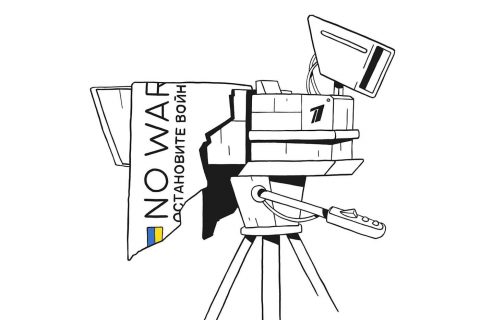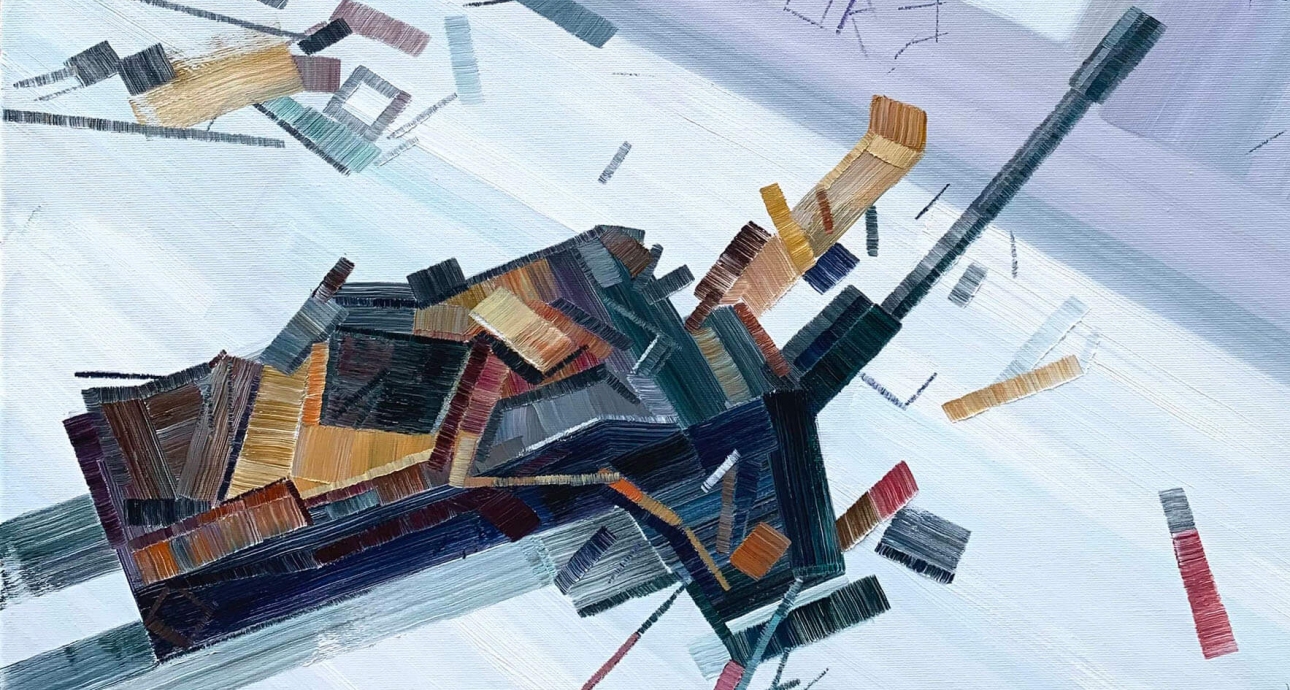
Large Scale War: Paintings by Natalia Levitasova
Before the war, Natalia Levitasova lived and worked in Kyiv, painting landscapes of nature and the city from life. Her artwork used to be filled with lots of geometry, colours, and light. After the full-scale Russian invasion of Ukraine, the content of her art changed. Now she documents the reality as it is, re-drawing the photos in her usual style – brightly and without a trace of pessimism. The artist spoke to Bird in Flight on how she abandoned the peaceful landscapes and why she isn’t going to get back to them.
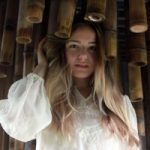
An artist. Went to the Ukrainian Academy of Printing in Lviv. Has exhibited her works in Ukraine and Czech Republic.
— I dreamt of living in the Carpathians for long, so in late January my husband and I found a house and moved there in February. We started getting settled as the accommodation wasn’t quite furnished, but we didn’t make it. At first, I couldn’t believe the war had started, as I didn’t follow the news much. I mean, I knew that anything could happen, but I hoped till the end that it would be okay.
The first two weeks of war felt like a blur, I don’t remember what I was doing at all. They passed without art. I had a feeling that everything stopped making sense, my painting was no exception. It seemed totally absurd to hold a brush while I had to buy, collect and drag the humanitarian goods somewhere, had to receive and take in guests. It was hard as 10 people came to live in the house.
I had a feeling that everything stopped making sense, my painting was no exception.
At some moment, I had a lot of pain built up in me, and it wouldn’t be relieved, because I wasn’t painting. So I decided to create my first artwork, and felt much better. It was a small painting: I wrote “PEACE” at the backdrop of the stormy skies and, using the same strokes, another word “WAR” nearby. Before that, my paintings didn’t have lettering. But now at times when I look at the finished work and feel like I need to add words to it, even if it’s something completely irrational.
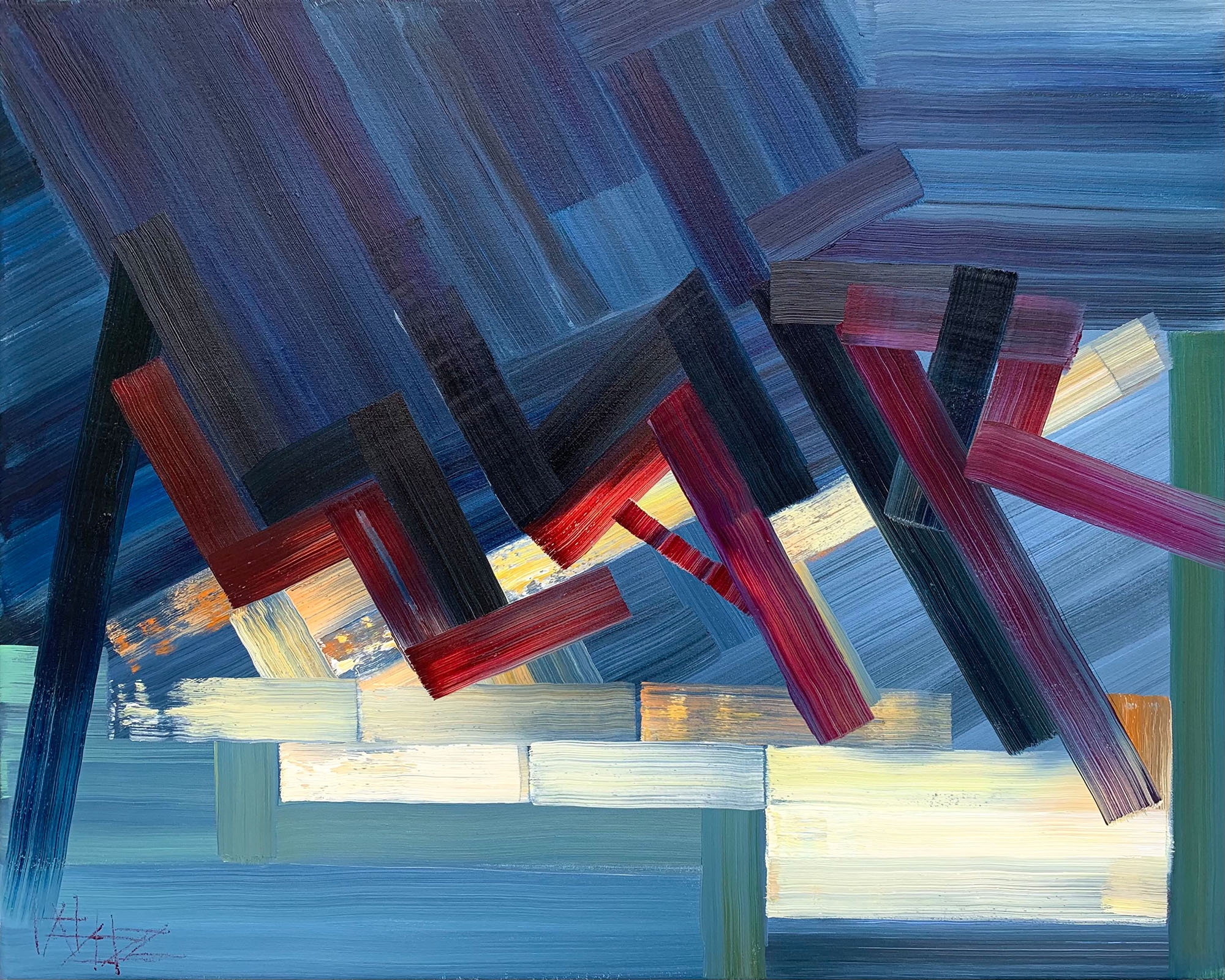
PEACE WAR
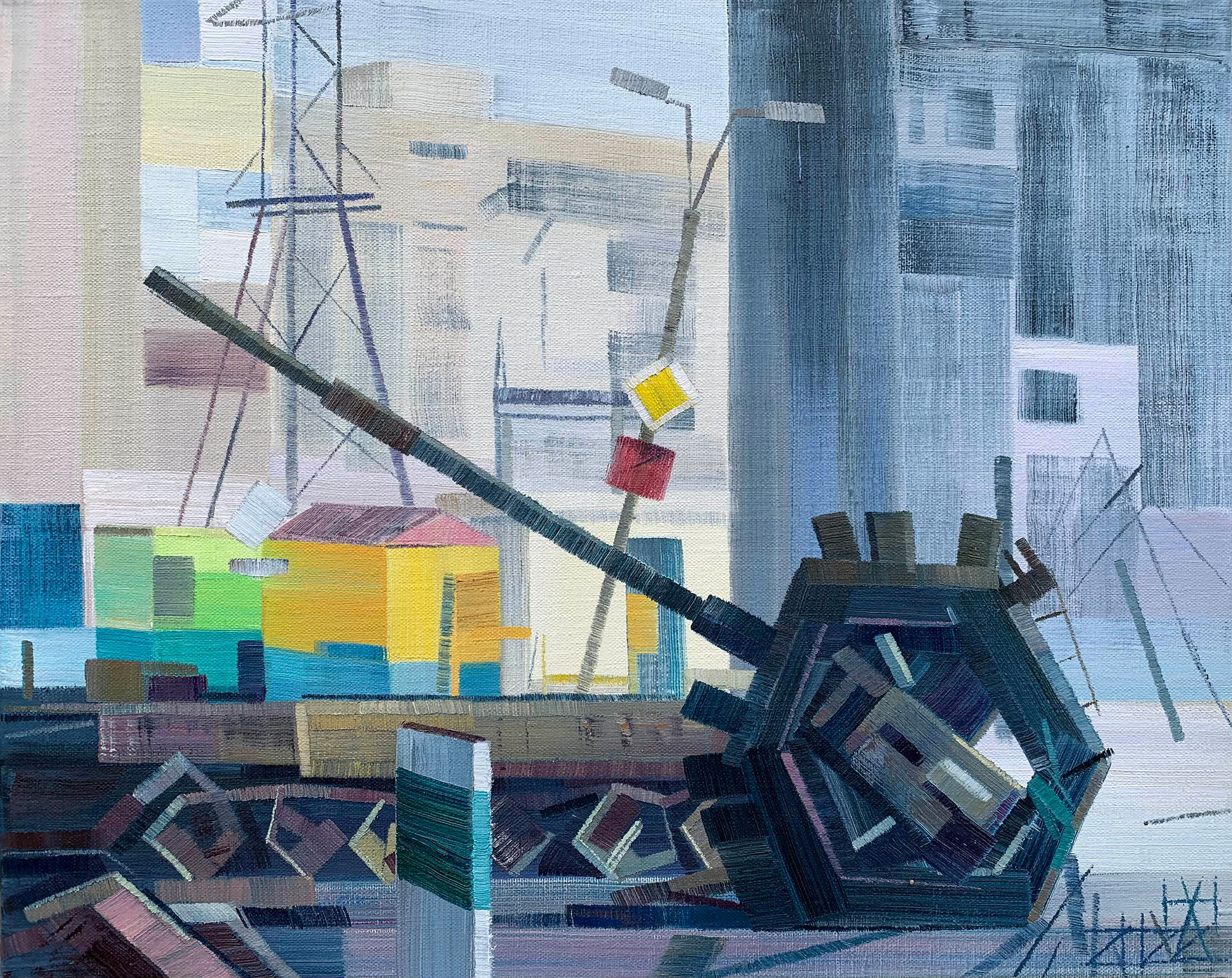
Modern Realities
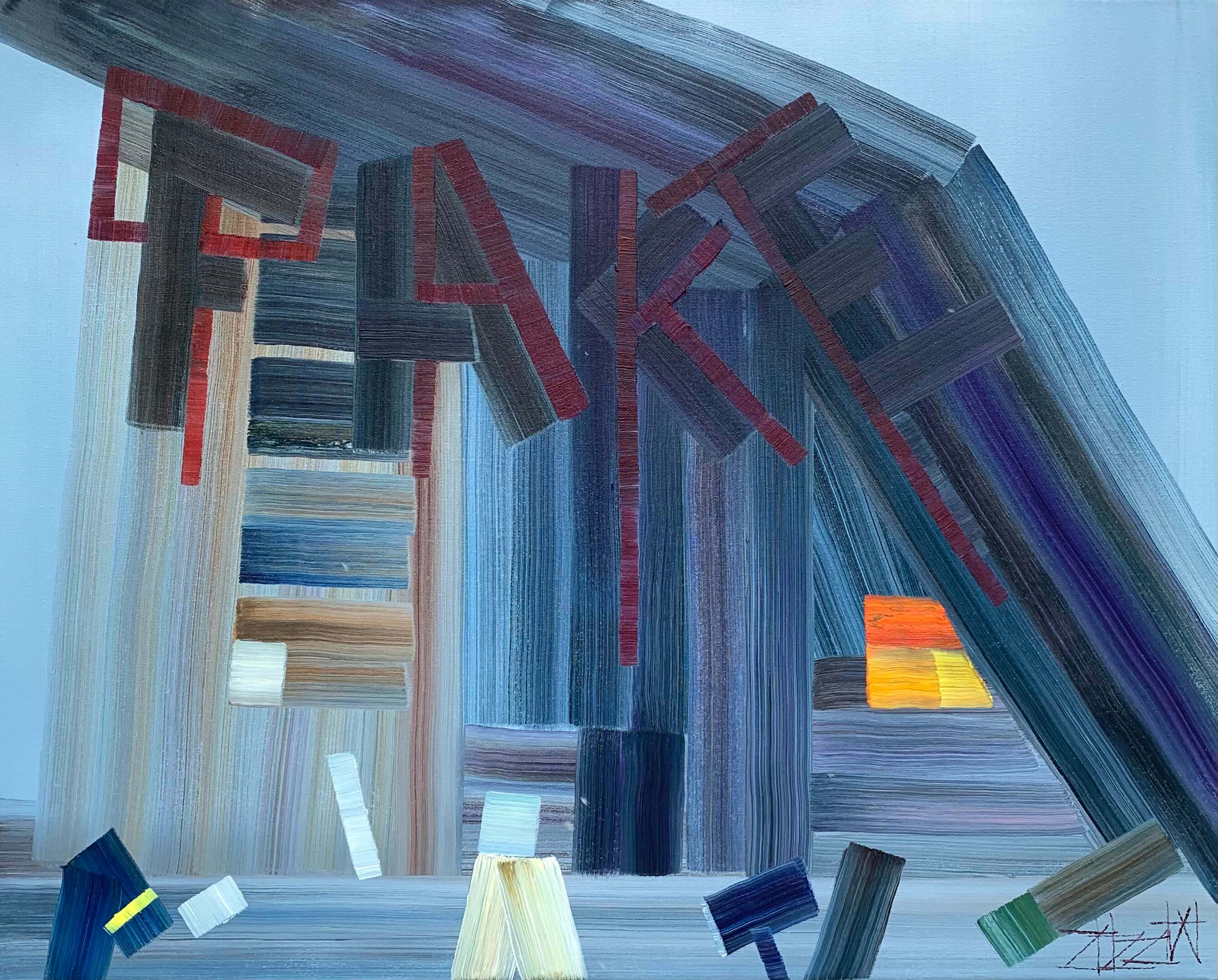
Fact Fake
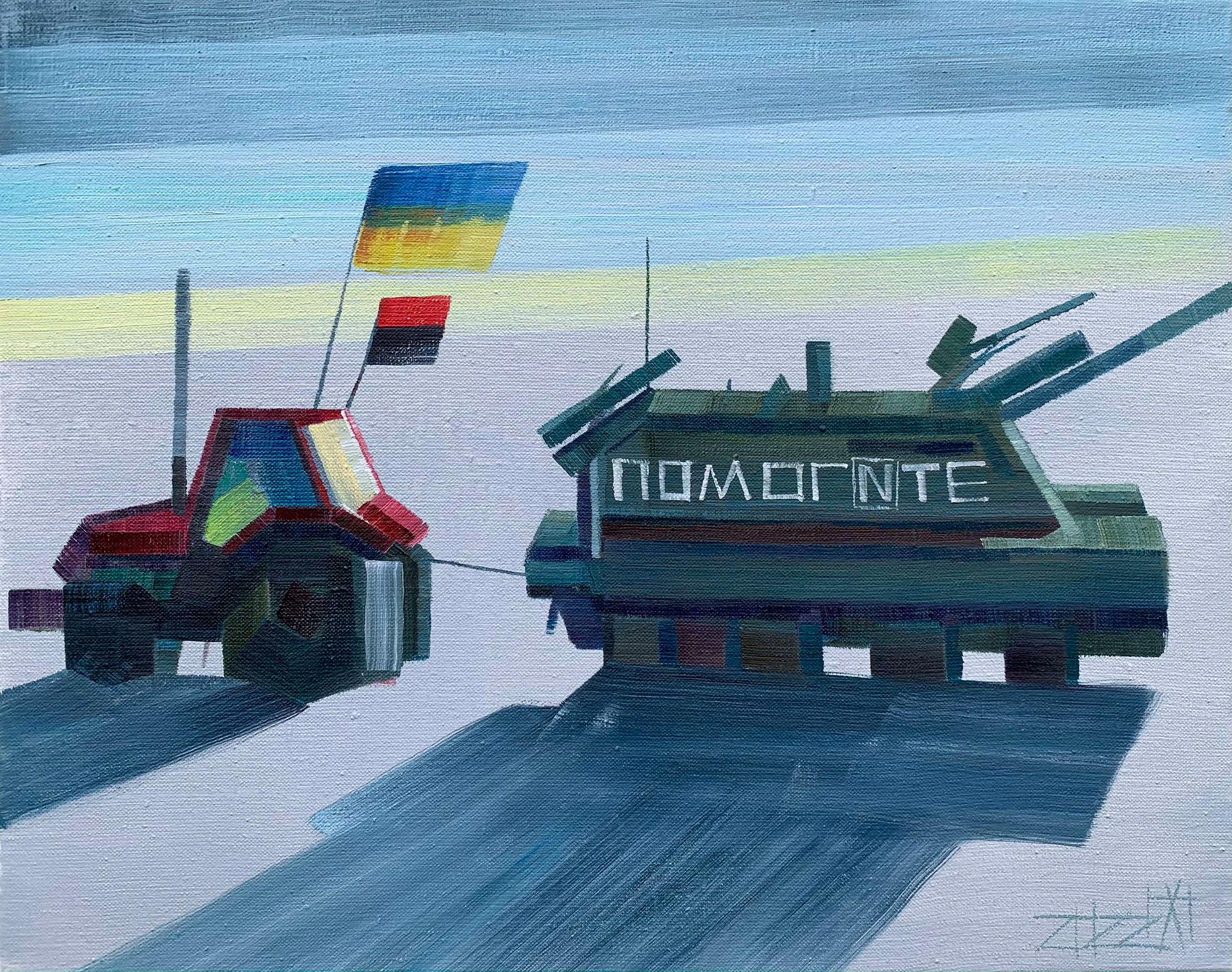
HELP (using the wrong writing for a Russian letter И so that it implies the letter Z when turned)
I don’t consider my painting to be mega-topical. But I have no intention of creating the most progressive and topical art anyway. I make paintings because I like oil paints, they are extremely versatile, and other art supplies just don’t give me that freedom.
Earlier on, I used to paint from life, but a year ago I started having a bad back, so now I hardly ever go outside to make études. I don’t like creating small scale art, and the large one is pretty hard to carry around, so now I mostly paint from photos. Before the war, I took all the pictures myself, but now I use the open-source ones; if it’s a copyrighted material, I ask for a permission to use it. I don’t think that painting from the picture could ruin the art, it is just one of the tools. Moreover, now it is the only way for me to see what I want to depict.
I re-paint the photos, using open-source pictures. Now it is the only way for me to see what I want to depict.
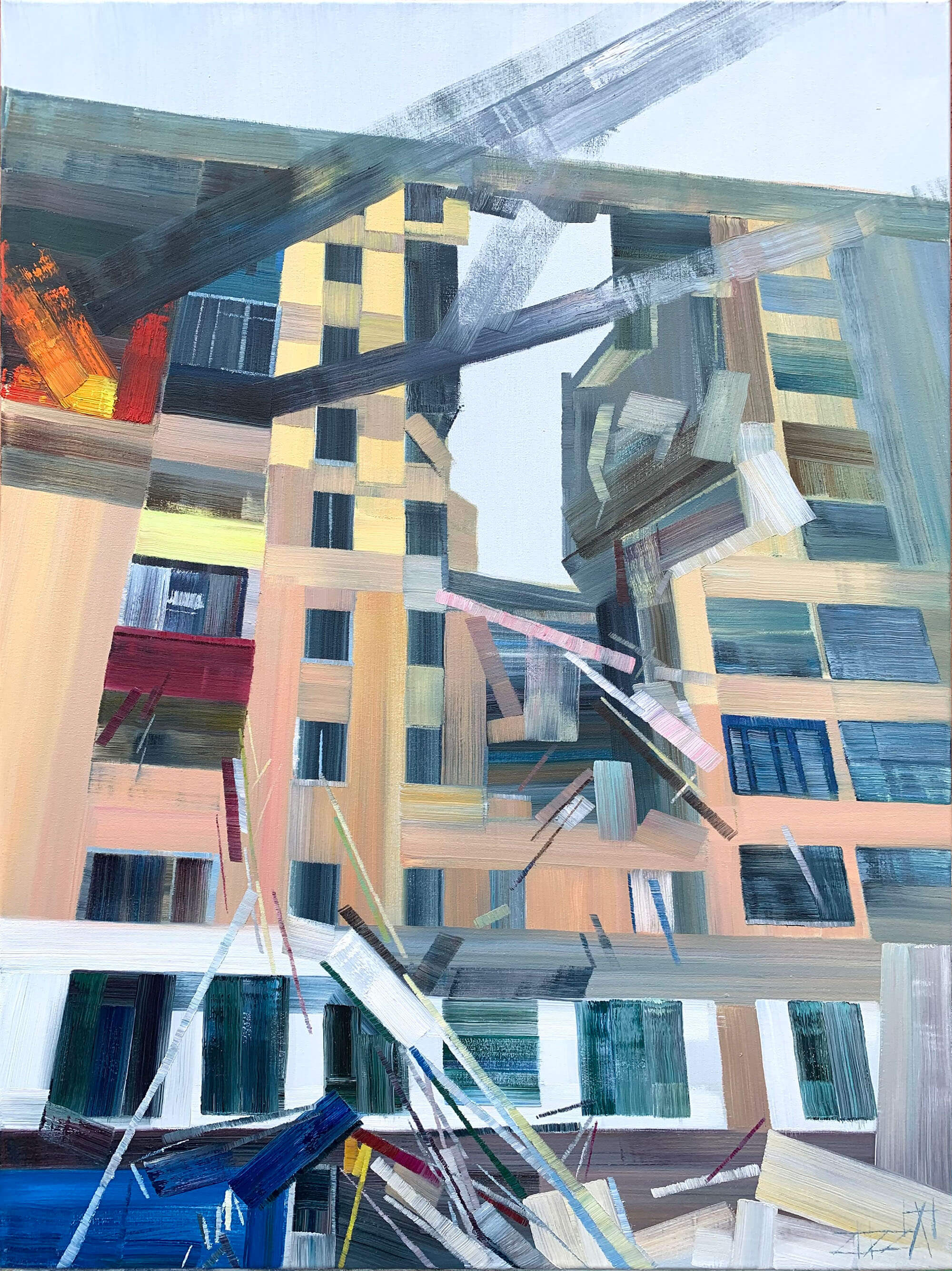
Window to the Russian World. Mariupol
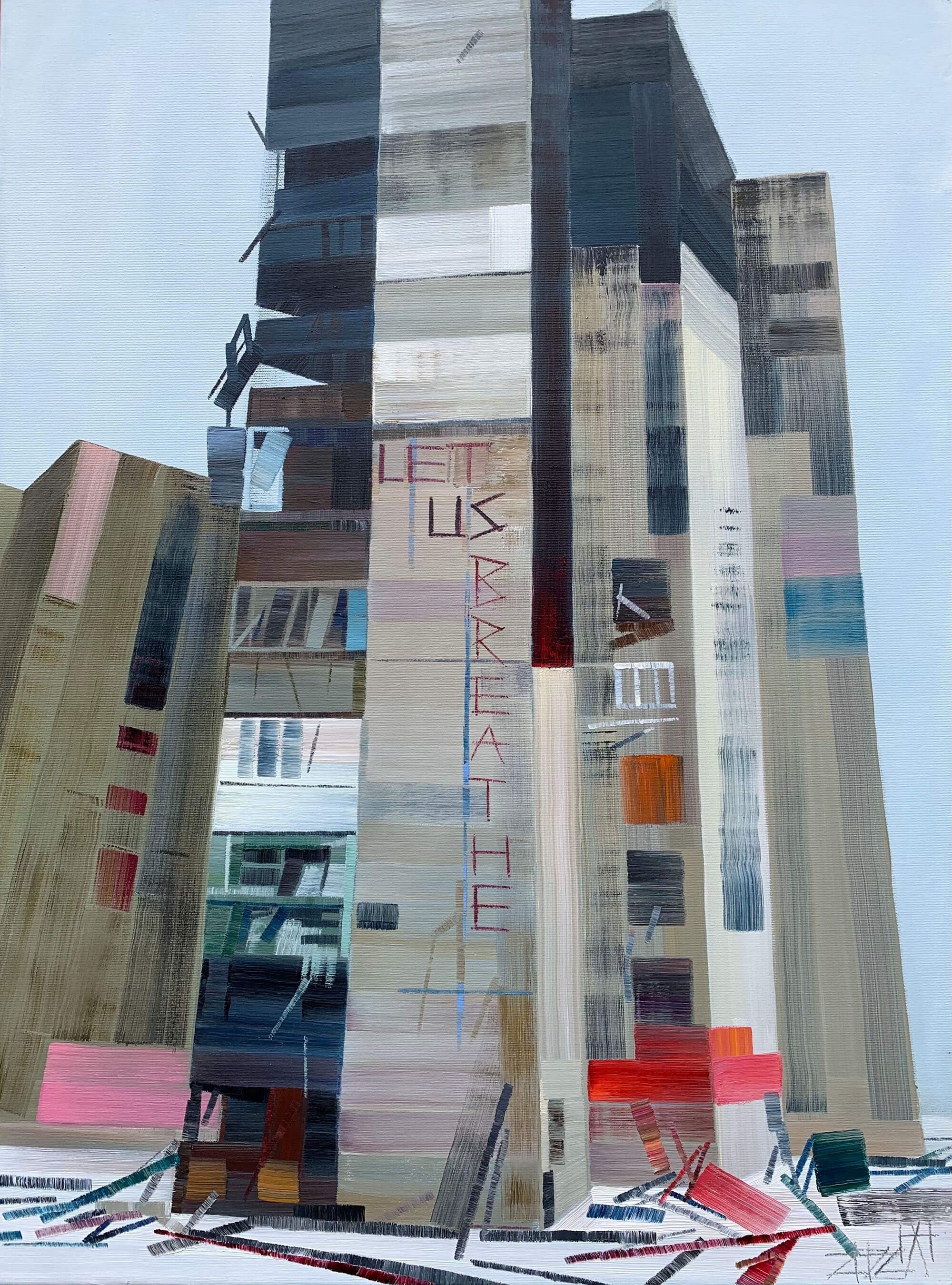
Let Us Breathe. Mariupol
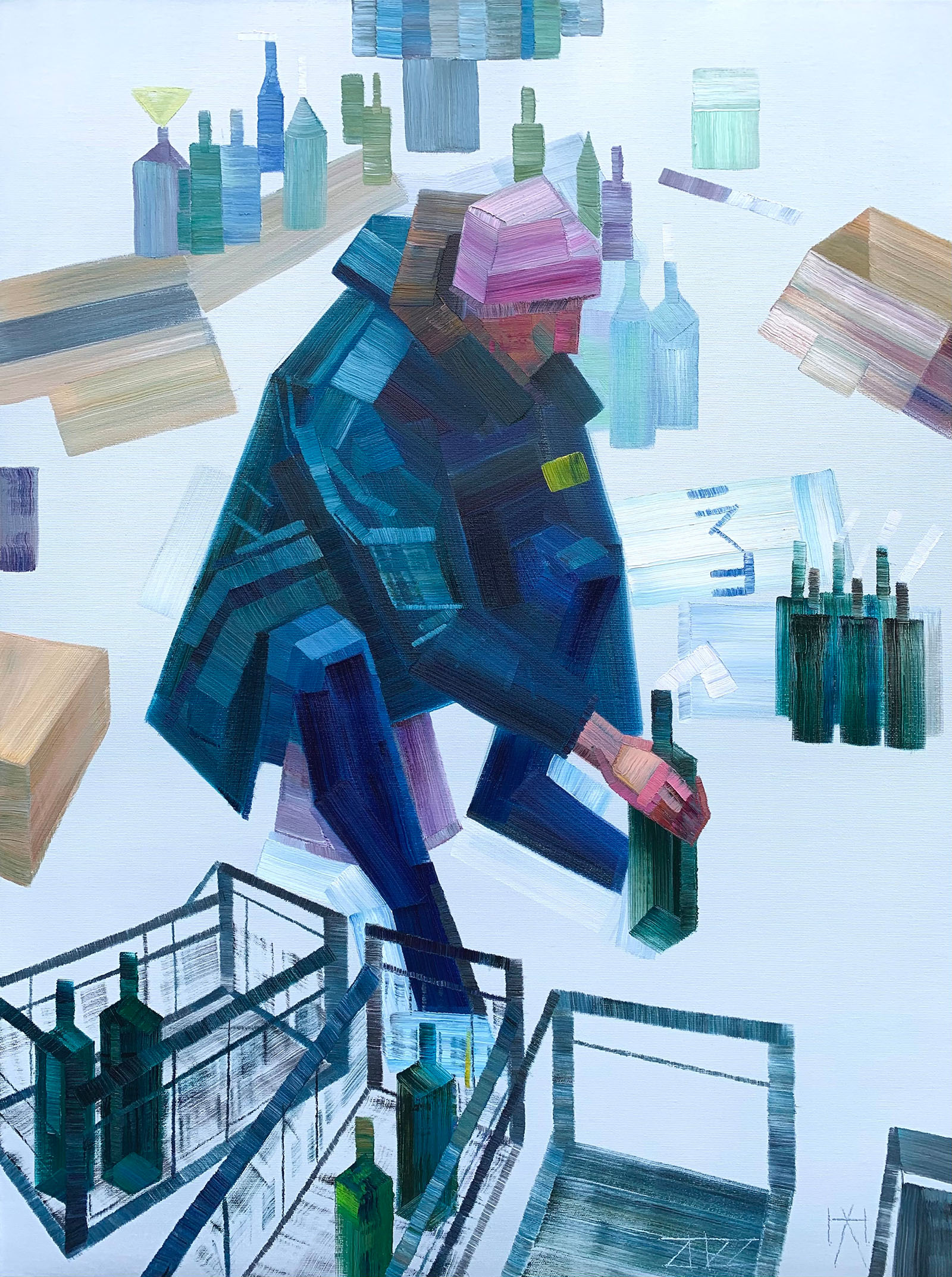
Bandera Smoothie
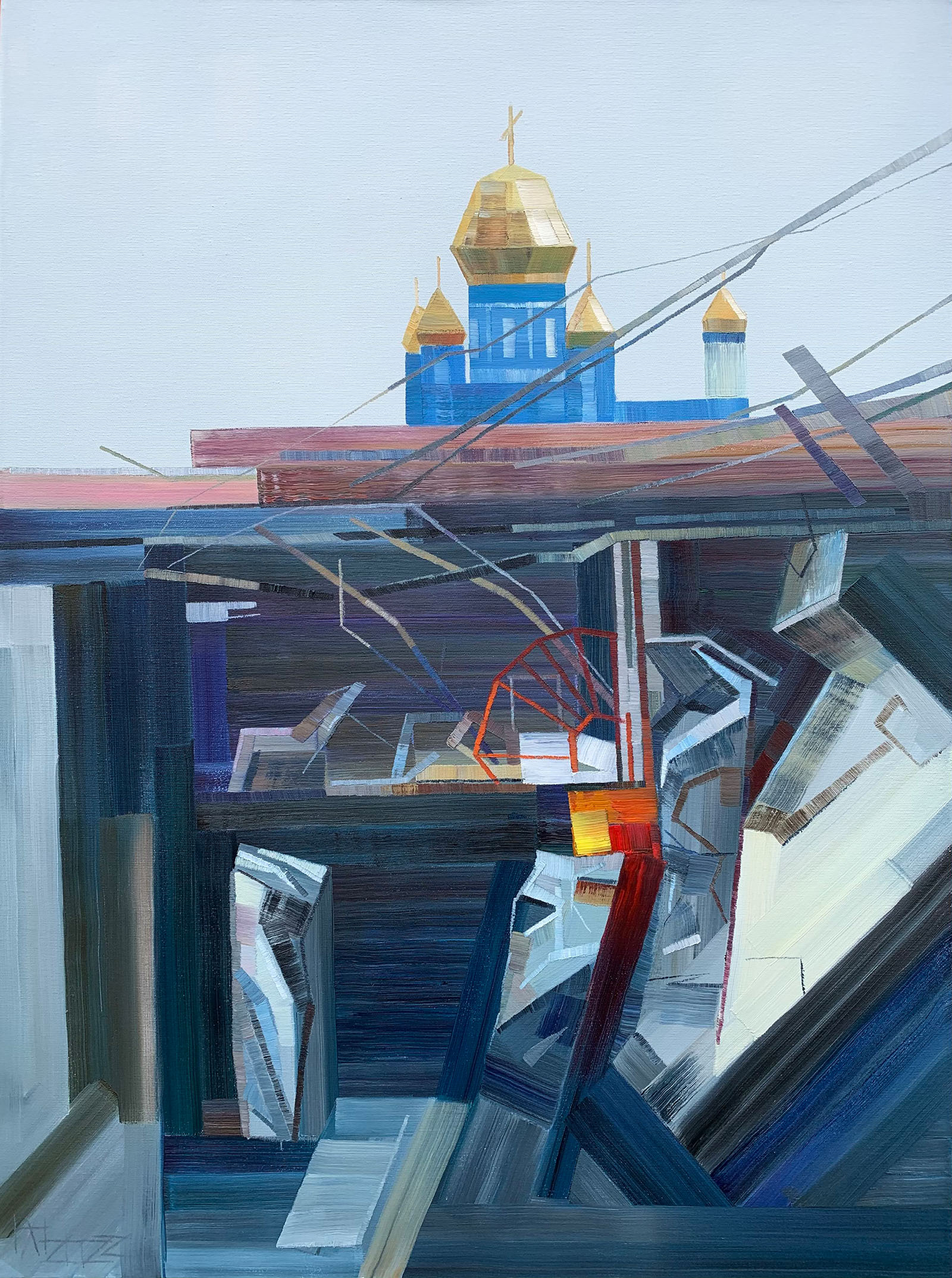
Mykolaiv
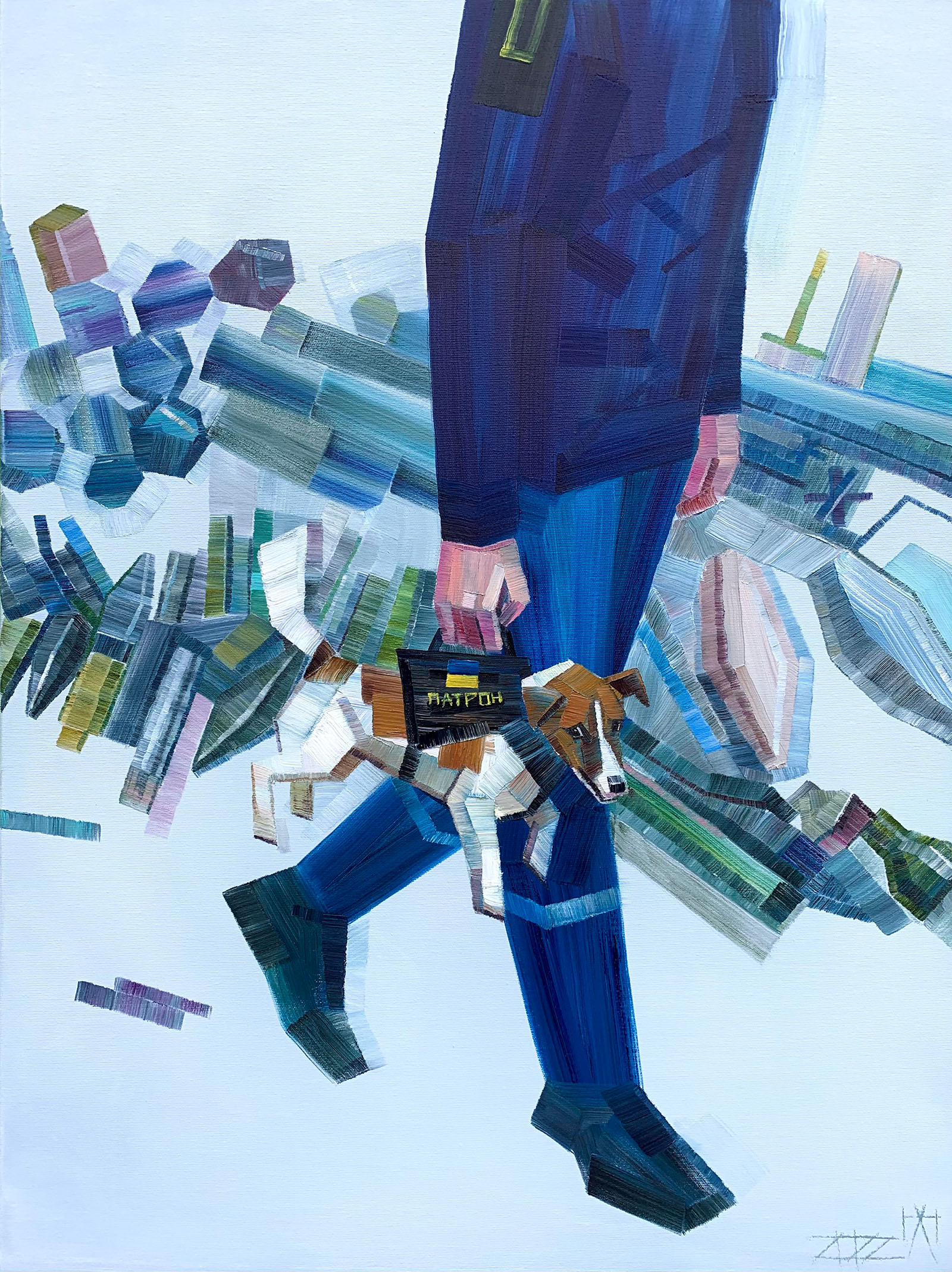
Patron
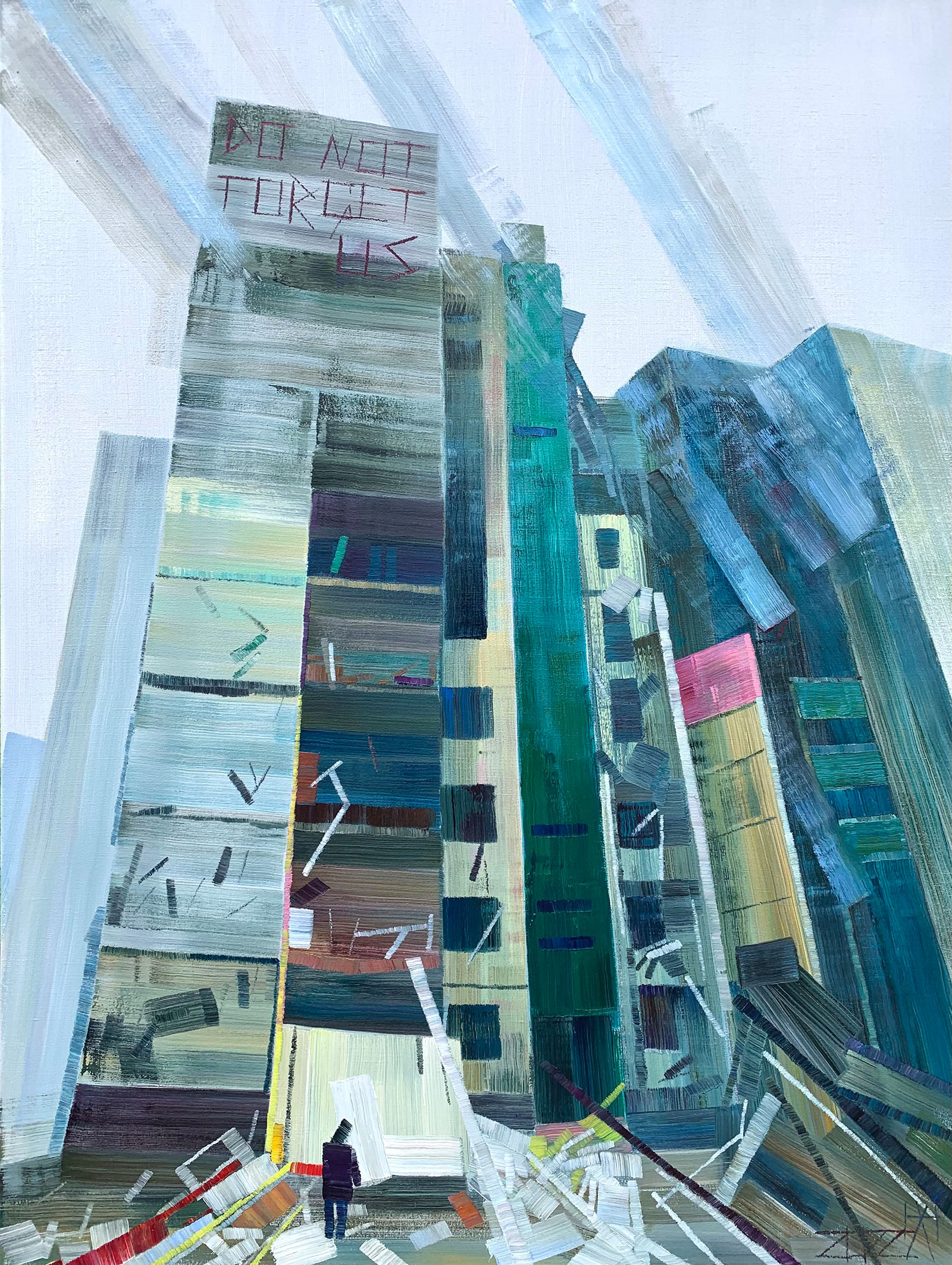
Do Not Forget Us. Chernihiv
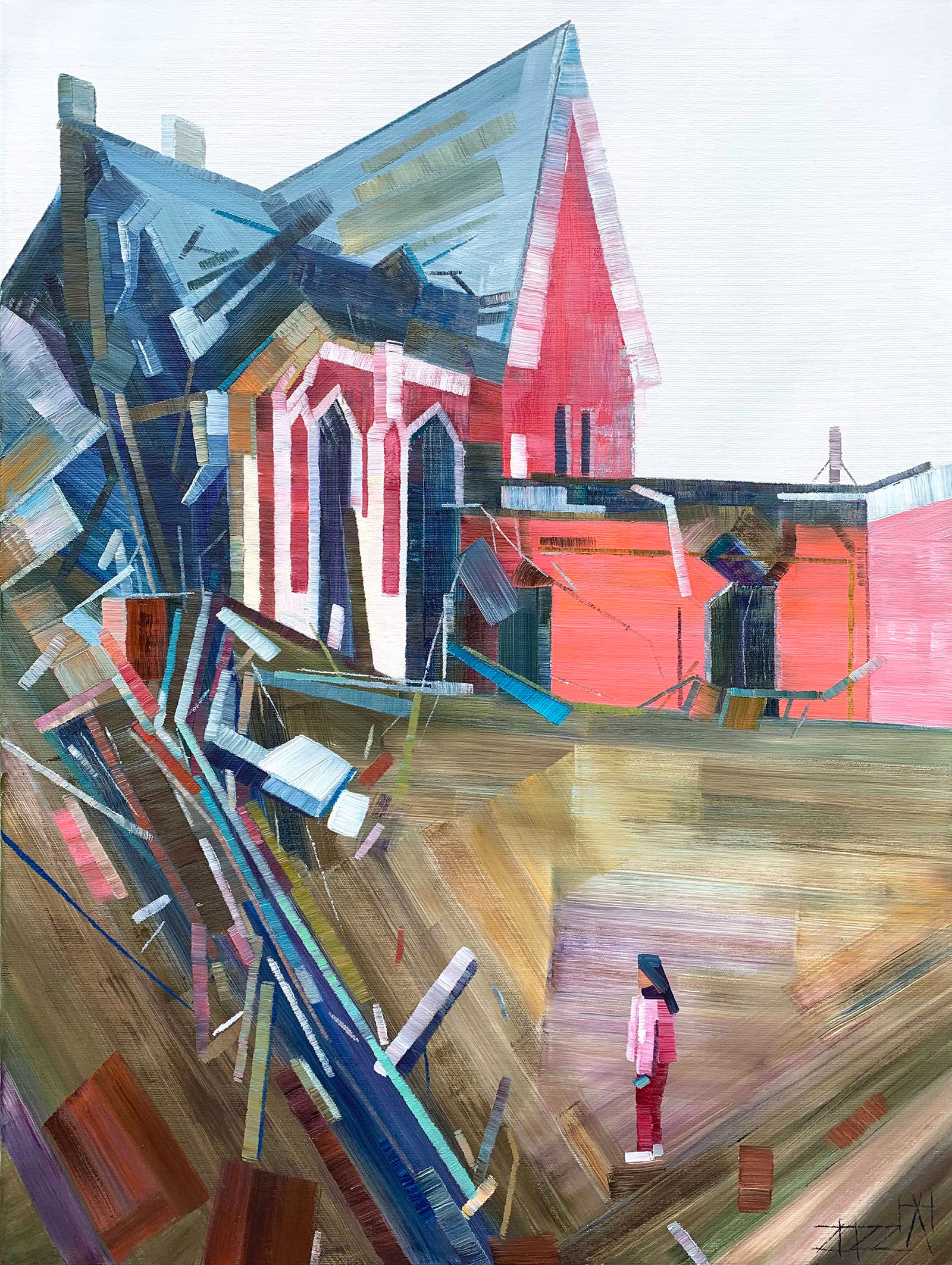
Chernihiv Library
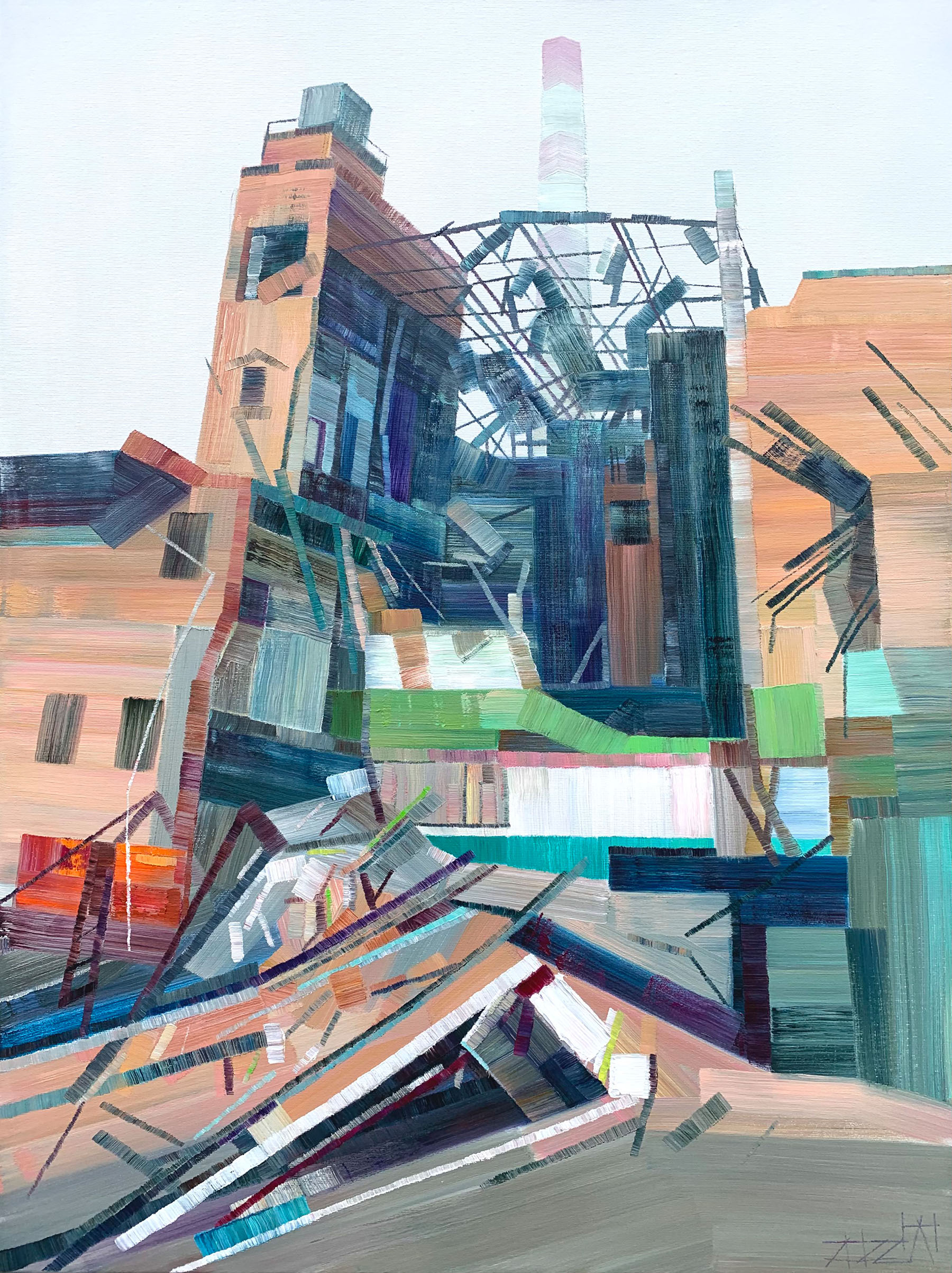
You'll Never Destroy Our Souls
My first wartime artwork was substantially darker than it used to be. But I don’t want to make up anything, and there are some bright spots in these pictures. I mean, I don’t say that this war has something good in it, but the reality is as it is – it’s colourful. People wish me to get back to my usual scenery, the peaceful one. But I don’t want it at all, it became pointless to me.
Now I run Instagram ads for the foreign audience. Horrendous pictures, like the photos of shot bodies in Bucha, can’t be promoted, unlike my paintings. And they will be seen, the attention will be drawn to the current events in Ukraine, as I would like more people all over the world to know what’s going on.
Horrendous pictures, like the photos of shot bodies in Bucha, can’t be promoted, unlike my paintings.
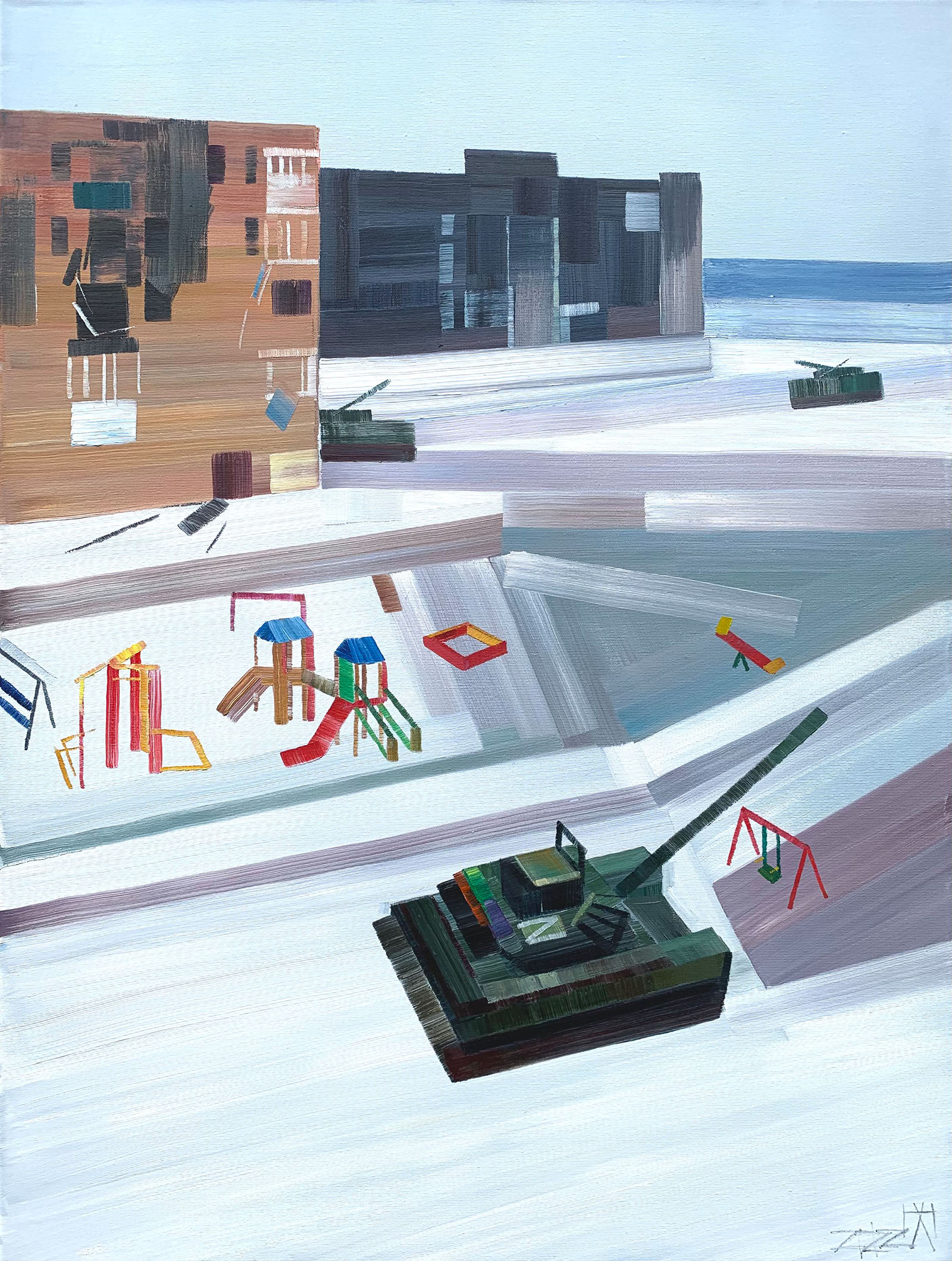
Volnovakha
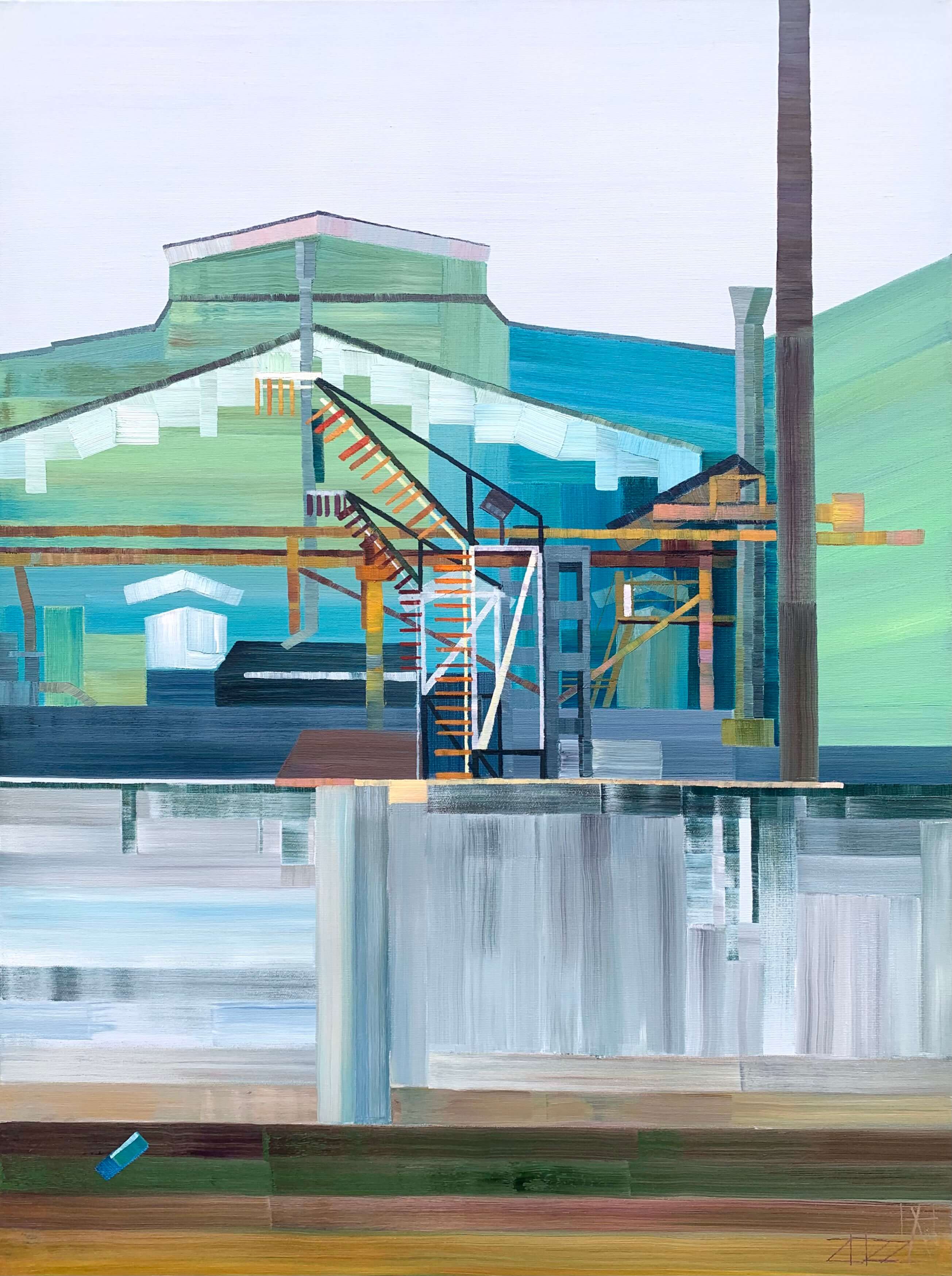
Train Kyiv-Rakhiv. Part 2
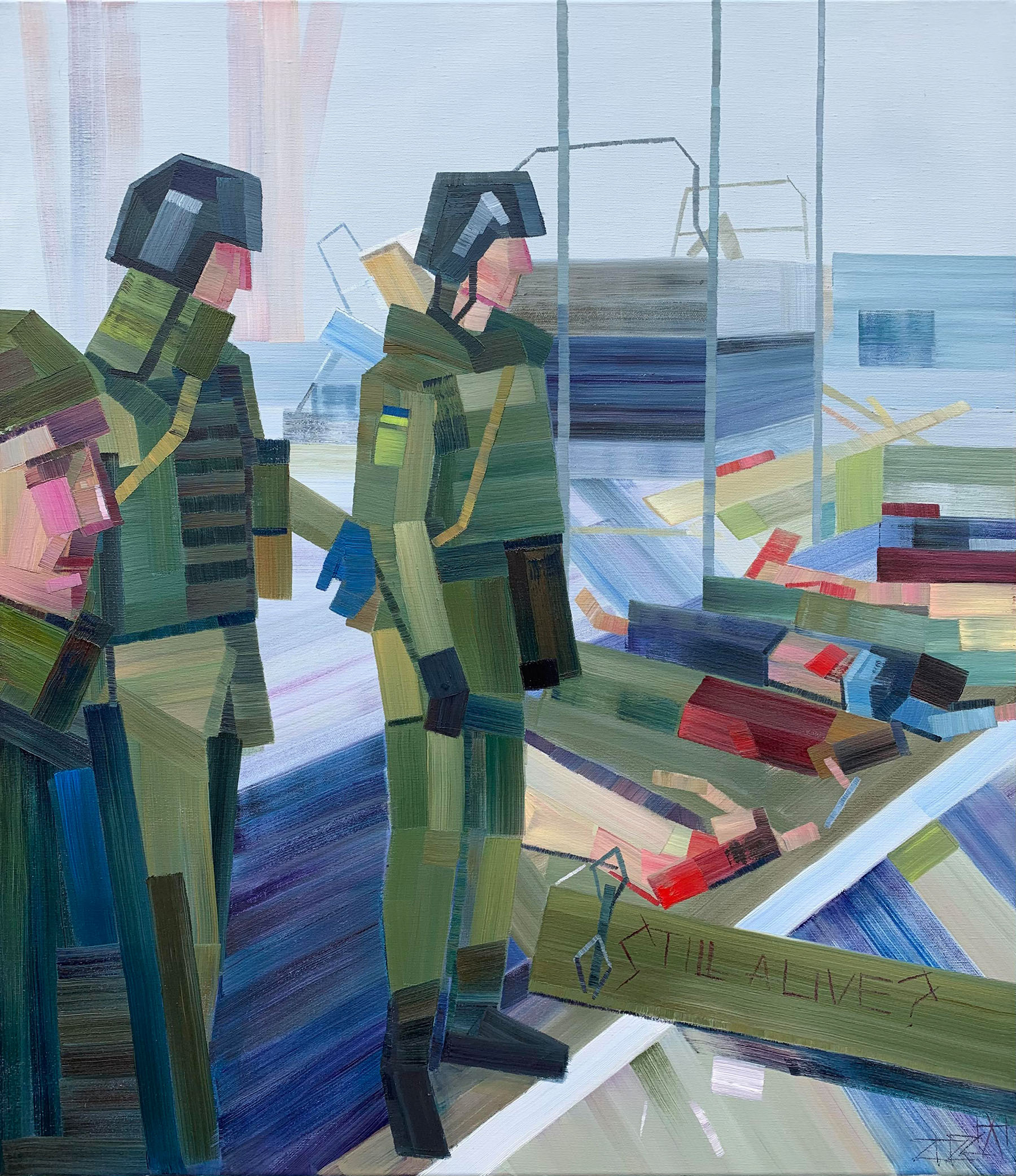
Military Base in Mykolaiv
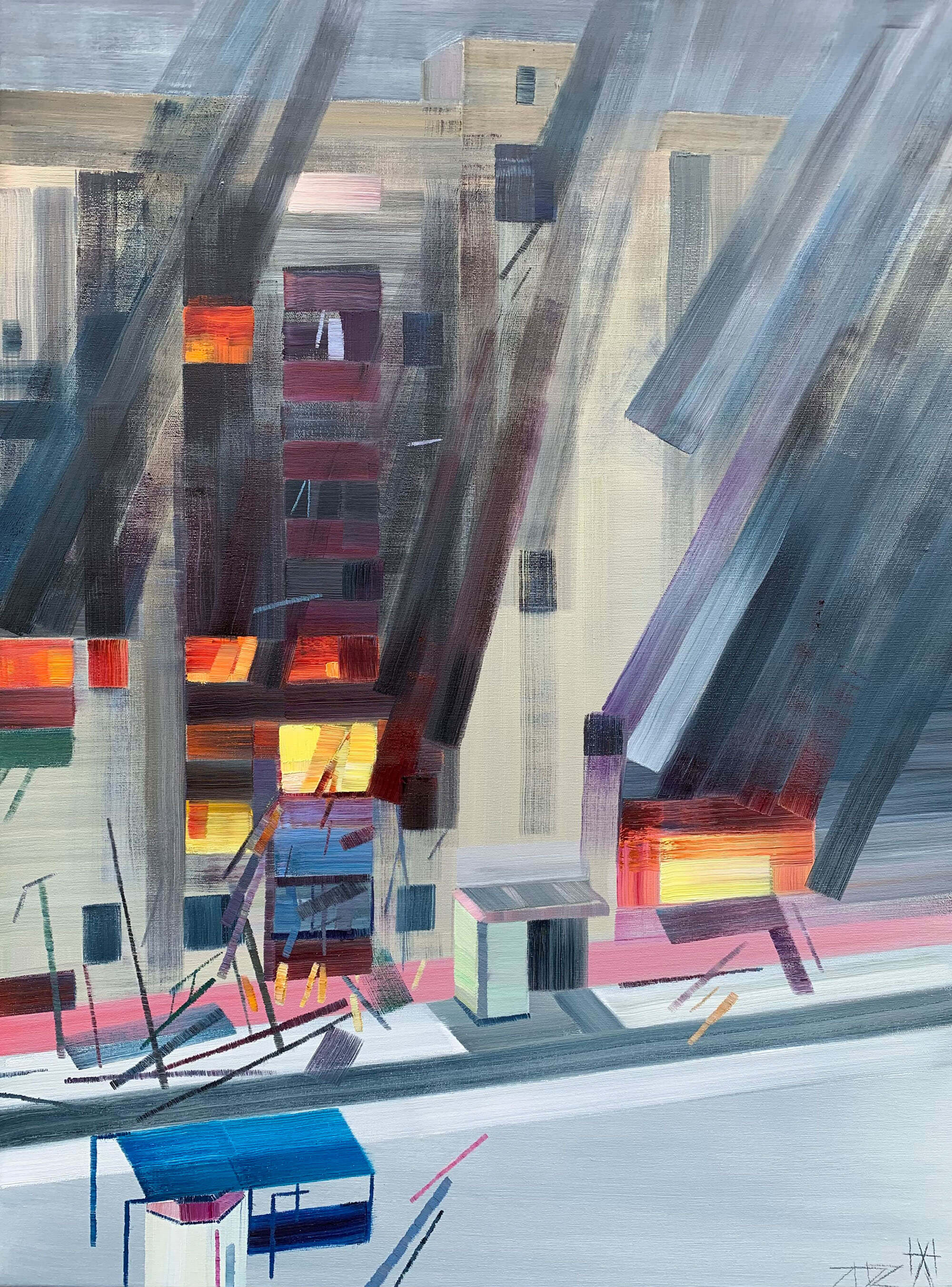
Lugansk Region
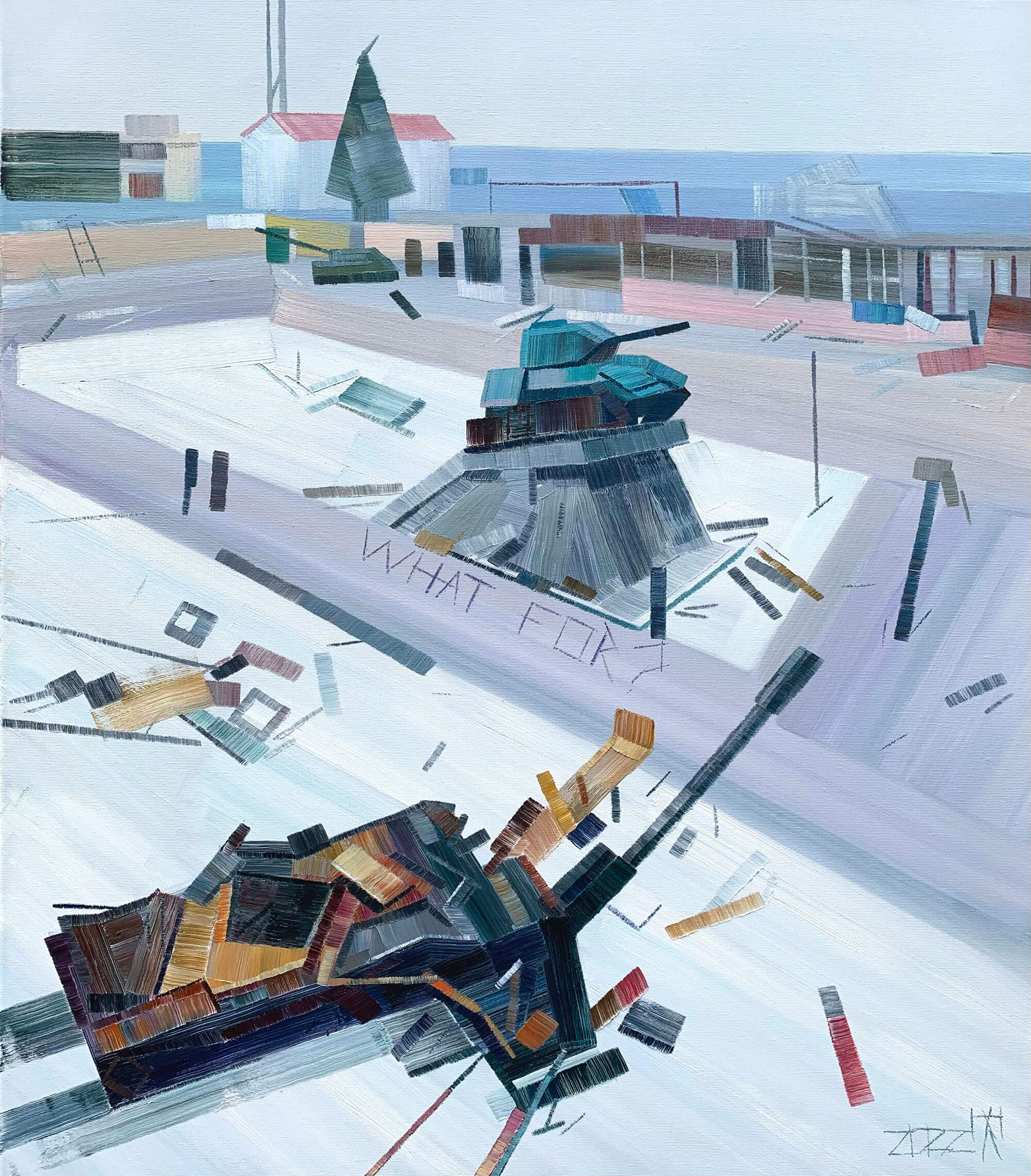
Trostianets
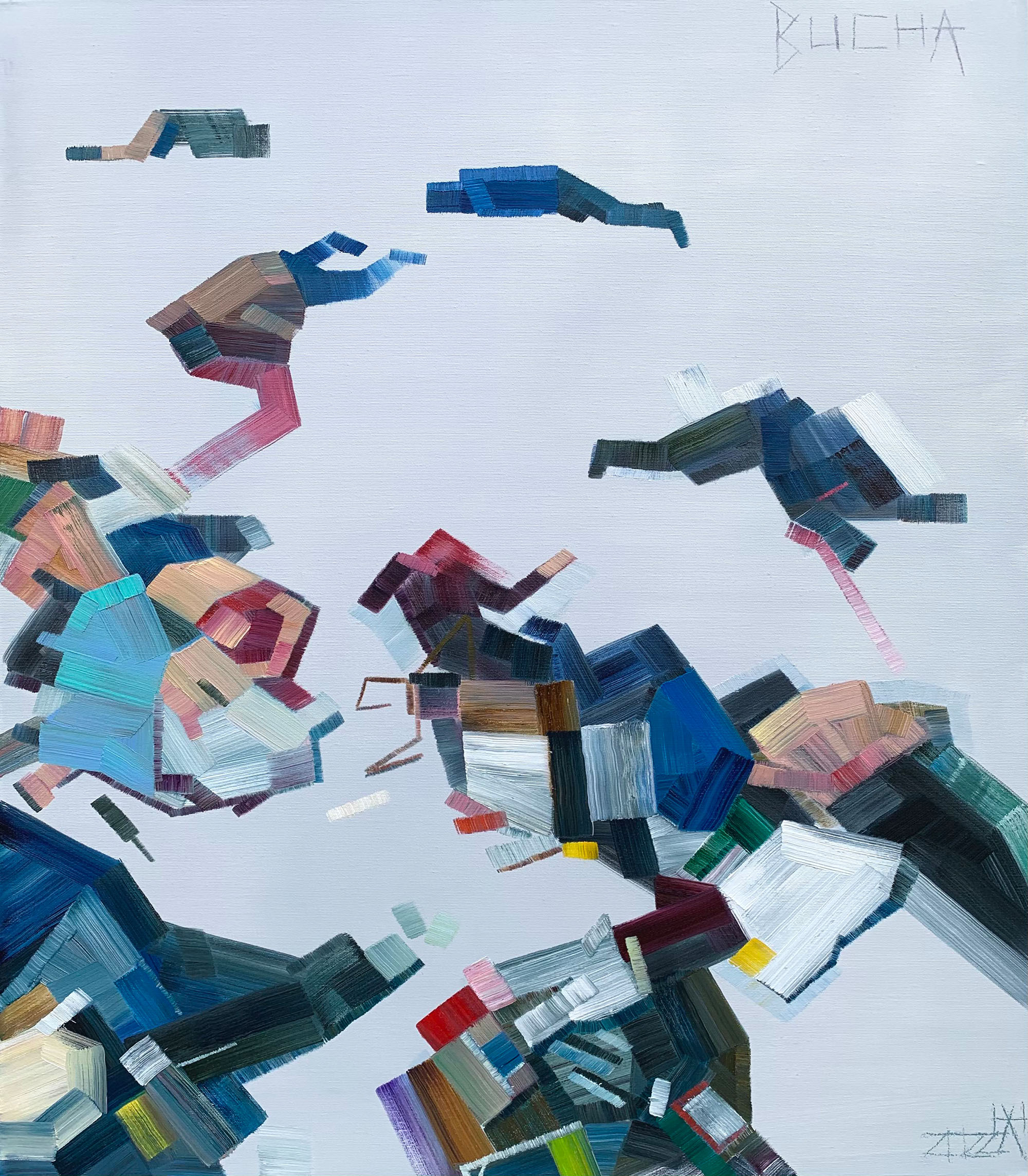
Civilians in Bucha
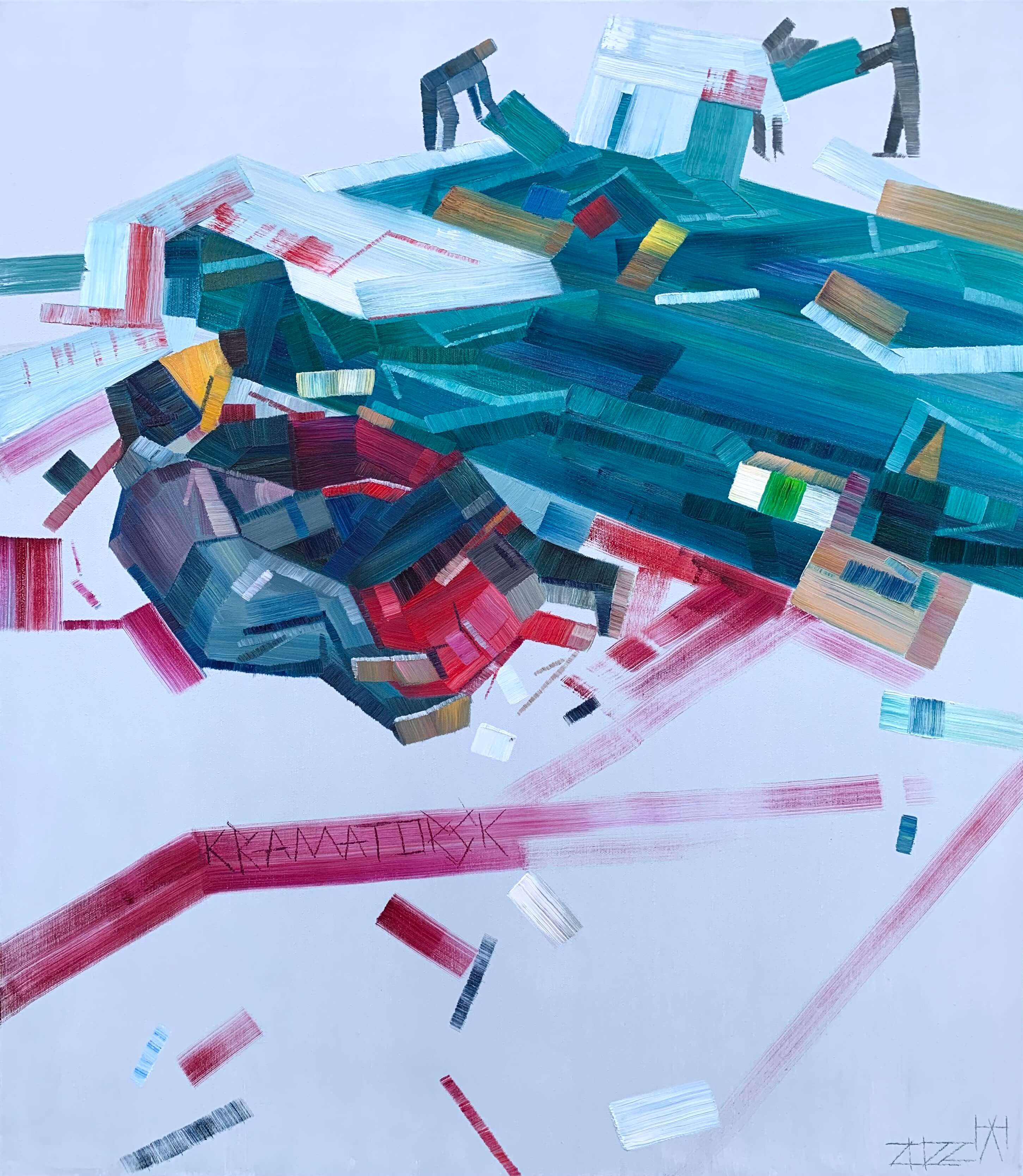
Kramatorsk
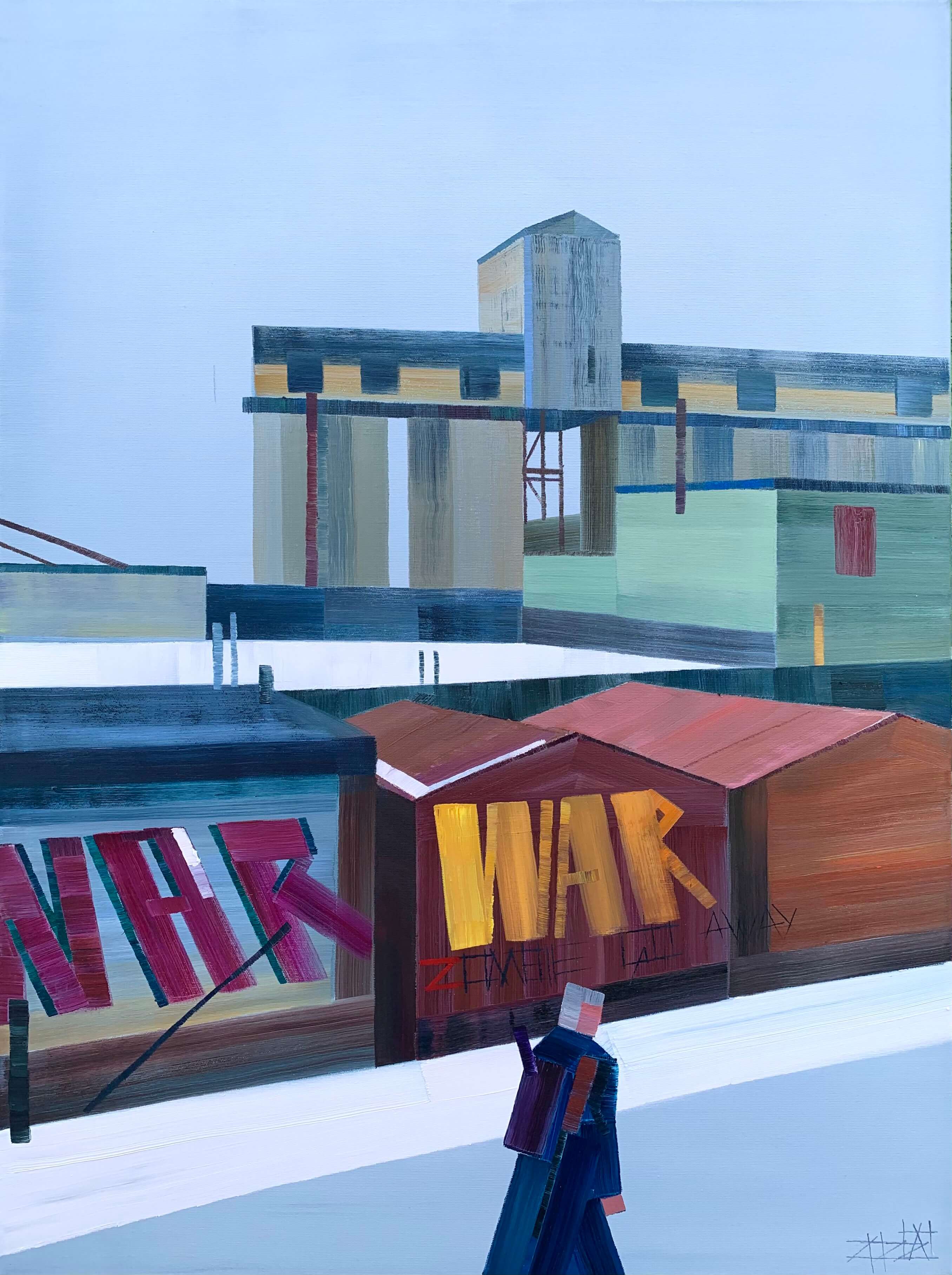
New and best
